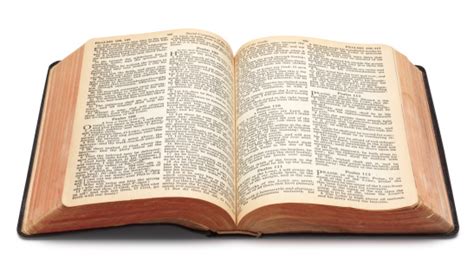Even into the time of the Parthian empire (to the east of and concurrent with the Roman empire), the Magi were not considered native people as the historian Strabo recorded:
“...that the Council of the Parthians, according to Poseidonius, consists of two groups, one that of kinsmen, and the other that of wise men and Magi, from both of which groups the kings were appointed...”
8
This longer section from Laertius gives much more detail about the Magi:
“The Persians have had their Magi, the Babylonians or Assyrians their Chaldaeans, and the Indians their Gymnosophists; and among the Celts and Gauls there are the people called Druids or Holy Ones.
Clitarchus...also says that the Chaldaeans apply themselves to astronomy and forecasting the future; while the Magi spend their time in the worship of the gods, in sacrifices and in prayers, implying that none but themselves have the ear of the gods. They propound their views concerning the being and origin of the gods, whom they hold to be fire, earth, and water; they condemn the use of images, and especially the error of attributing to the divinities difference of sex. They hold discourse of justice, and deem it impious to practise cremation; but they see no impiety in marriage with a mother or daughter, as Sotion relates in his twenty-third book. Further, they practise divination and forecast the future, declaring that the gods appear to them in visible form. Moreover, they say that the air is full of shapes which stream forth like vapour and enter the eyes of keen-sighted seers. They prohibit personal ornament and the wearing of gold. Their dress is white, they make their bed on the ground, and their food is vegetables, cheese, and coarse bread; their staff is a reed and their custom is, so we are told, to stick it into the cheese and take up with it the part they eat.
With the art of magic they were wholly unacquainted, according to Aristotle in his
Magicus and Dinon in the fifth book of his
History Dinon tells us that the name Zoroaster, literally interpreted, means “star-worshipper”; and Hermodorus agrees with him in this. Aristotle in the first book of his dialogue
On Philosophy declares that the Magi are more ancient than the Egyptians; and further, that they believe in two principles, the good spirit and the evil spirit, the one called Zeus or Oromasdes, the other Hades or Arimanius. This is confirmed by Hermippus in his first book about the Magi, Eudoxus in his
Voyage round the World, and Theopompus in the eighth book of his
Philippica. The last-named author says that according to the Magi men will live in a future life and be immortal, and that the world will endure through their invocations. This is again confirmed by Eudemus of Rhodes. But Hecataeus relates that according to them the gods are subject to birth. Clearchus of Soli in his tract
On Education further makes the Gymnosophists to be descended from the Magi; and some trace the Jews also to the same origin. Furthermore, those who have written about the Magi criticize Herodotus. They urge that Xerxes would never have cast javelins at the sun nor have let down fetters into the sea, since in the creed of the Magi sun and sea are gods. But that statues of the gods should be destroyed by Xerxes was natural enough.”
9
The Magi had an important role in the vast Persian empire and its governmental centres were located throughout Asia Minor. The Parthians, as successors of the Persian empire had periodic violent dealings with the Romans and King Herod in particular. The influential Magi would have been a well known part of the political landscape of the time.
Matthew states that the Magi came from the east. What exactly did the term “east” mean? Certainly Babylon and the Parthian empire were located to the east of Judea. But the Bible refers to a specific area as “east.” When Abraham lived in Canaan, he desired to focus on Isaac as the fulfillment of God's covenant promise and sent his other sons away to the “east country.”
“But to the sons of his concubines Abraham gave gifts, and while he was still living he sent them away from his son Isaac, eastward to the east country.” (Genesis 25:6)
Some years later, Isaac desired Jacob to marry from within his own people group. “Then Jacob went on his journey and came to the land of the people of the east.” (Genesis 29:1) This was the city of Haran, north-east of Canaan and in modern day southern Turkey.
During the conquest of Canaan by the Israelites, there is a connection made between Kedar, the son of Ishmael, and Arabah to the east. Arabah is from the word “arab” (S# 6148) which means “mixed” and also “to trade, barter.”
“Now these are the kings of the land whom the people of Israel defeated and took possession of their land beyond the Jordan toward the sunrise, from the Valley of the Arnon to Mount Hermon, with all the Arabah eastward...” (Joshua 12:1)
1 Chronicles 1:29 identifies Kedar with Nebaioth (the Nabataeans). Later prophets continue to connect Kedar with the East. “Rise up, advance against Kedar! Destroy the people of the east! (Jeremiah 49:28). They are described as having camels, flocks and curtains (tents). Ezekiel 27:21 states: “Arabia and all the princes of Kedar.” Isaiah 21:13-17 connects Kedar with Arabia, Dedan and Tema. One tribe of Israel “lived to the east as far as the entrance of the desert this side of the Euphrates, because their livestock had multiplied in the land of Gilead.” (1 Chronicles 5:9)
These passages specify that the East consisted of the area outside the borders of Israel which included from northern Syria south to modern day Saudi Arabia. East ended before the Euphrates River so that Babylon and Persia were already part of the Far East. The whole area was described as Arabah/Arabia, the land of the Arabs. Jamieson's Bible Commentary says:
“The Arabs divide their country into the north, called Sham, or “the left”; and the south, called Yemen, or “the right”; for they faced east; and so the west was on their left, and the south on their right. Arabia-Deserta was on the east, Arabia-Petræa on the west, and Arabia-Felix on the south.”
10
Arabia was a special place in the Scriptures. Moses' final blessing on Israel mentions several locations in Arabia:
“The Lord came from Sinai and dawned from Seir upon us; he shone forth from Mount Paran” (Deuteronomy 33:1)
God gave the Law to Moses and the Israelites while in Arabia and it was there that they wandered for forty years. Sinai and Mount Horeb both describe the same location which is in Arabia as Paul specifically states in Galatians 4:25: “Now Hagar is Mount Sinai in Arabia.” This also ties Hagar and the descendants of Ishmael to the area as well. Paul goes on to state that he spent time in Arabia after his conversion. “But I went away into Arabia, and returned again to Damascus.” (Galatians 1:17) Since he was a Pharisee and well versed in the Law and history, he might very well have spent time at Sinai working through how Christ was the fulfillment of the Torah, his whole reason for existence until that point. He may have followed in the footsteps of Elijah who spent a period of renewal at Mount Horeb/Sinai:
“And he arose and ate and drank, and went in the strength of that food forty days and forty nights to Horeb, the mount of God.” (I Kings 19:8)
Isaiah 60 contains a prophecy of a future era of peace as the nations of the world come to Israel to worship God. The tribes of the East are listed:
“A multitude of camels shall cover you,
the young camels of Midian and Ephah;
all those from Sheba shall come.
They shall bring gold and frankincense,
and shall bring good news, the praises of the Lord.
All the flocks of Kedar shall be gathered to you;
the rams of Nebaioth shall minister to you;
they shall come up with acceptance on my altar,
and I will beautify my beautiful house.” (Isaiah 60:6-7)
These tribes are mentioned in 1 Chronicles 1:28-33 as sons of Jokshan, the son of Abraham's concubine Keturah and as the sons of Ishmael, also a son of Abraham. These were all sons that Abraham had sent away to the East country.
The previous quote from Deuteronomy mentions the place called “Seir” which is Mount Seir located near Petra in Jordan. This was the domain of the ancient Nabataeans who were named after Nebaioth, son of Joktan. One of their major gods was named “Dushara” which means “the god (dhu) of ash-Shara (Shara).”
11
In the Hebrew language “Seir” is pronounced “say-eer” but by the Nabataeans it was “sha-ra.” There are two Hebrew homonyms, sounding similar, which will become significant as we continue. The first is “sha-ar” (S# 8180) which means “a measure ie. hundred-fold.” The second is “shaar” (S# 8176) which is “to think, calculate, or reckon.”

